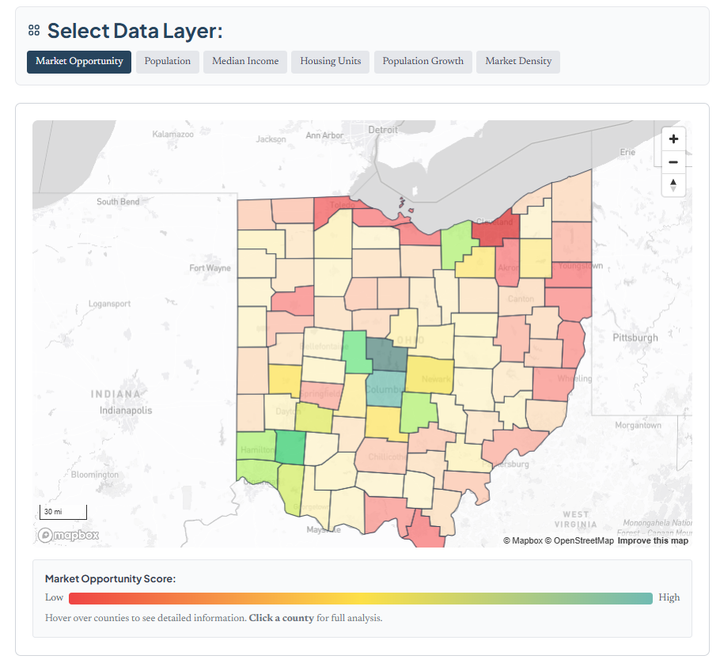Comparative Analysis of Four Strategic Business Frameworks
A side-by-side breakdown of the BCG Matrix, McKinsey/GE Matrix, Product Life Cycle, and Ansoff Matrix—explaining how they guide business growth, resource allocation, and innovation strategy.

BCG Matrix, McKinsey/GE Matrix, Product Life Cycle, and Ansoff Matrix
Prepared for Strategic Evaluation and Advisory Use (Polaris Pixels / Client Onboarding Framework)
1. Introduction
Every business exists within a lifecycle and competitive context. To understand where a company stands—and how to help it grow—we can use several classic strategy frameworks that view the business from different angles.
This paper compares four of the most widely accepted tools:
- Boston Consulting Group (BCG) Growth-Share Matrix
- McKinsey/GE Nine-Cell Matrix
- Product Life Cycle (PLC) Model
- Ansoff Matrix
Together, these models allow consultants to:
- Diagnose the current position of a company or business unit.
- Identify the most suitable strategic posture.
- Prioritize initiatives that improve profitability, resilience, or growth.
These frameworks serve as the backbone of a structured diagnostic approach for Polaris Pixels’ business strategy engagements—whether applied to a multinational or a local service provider like Jack Woods Plumbing.
2. Framework Summaries
2.1. BCG Growth-Share Matrix
| Dimension | High Market Share | Low Market Share |
|---|---|---|
| High Market Growth | Stars – growth leaders; require heavy reinvestment. | Question Marks – potential future Stars; risky bets. |
| Low Market Growth | Cash Cows – steady profits; fund new ventures. | Dogs – limited potential; candidates for exit. |
- Primary Lens: Portfolio balance between growth and profitability.
- Key Variables: Relative market share, market growth rate.
- Use Case: Evaluate product or service mix for resource allocation.
- Strategic Question: Where should we invest, hold, harvest, or divest?
2.2. McKinsey/GE Nine-Cell Matrix
| High Industry Attractiveness | Medium | Low | |
|---|---|---|---|
| Strong Business Strength | Invest / Grow | Selective Growth | Maintain |
| Medium Strength | Selective Growth | Maintain | Harvest |
| Weak Strength | Harvest | Divest | Exit |
- Primary Lens: Multivariate evaluation of business units.
- Key Variables: Industry attractiveness (size, growth, barriers, profitability) and business strength (market position, brand, capabilities).
- Use Case: Sophisticated portfolio management when simple growth/share data is insufficient.
- Strategic Question: Where can we compete effectively and profitably?
2.3. Product Life Cycle (PLC)
| Stage | Characteristics | Strategic Focus |
|---|---|---|
| Introduction | Low sales, high costs, product uncertainty. | Build awareness, refine offer. |
| Growth | Rapid market adoption, rising profitability. | Scale operations, defend position. |
| Maturity | Slowed growth, market saturation. | Efficiency, differentiation, customer retention. |
| Decline | Falling sales, commoditization. | Diversify, divest, or reinvent. |
- Primary Lens: Temporal evolution of a product or business model.
- Key Variables: Market adoption, sales trajectory, profitability curve.
- Use Case: Guides marketing, investment, and innovation timing.
- Strategic Question: Where are we in the lifecycle—and what comes next?
2.4. Ansoff Matrix
| Existing Markets | New Markets | |
|---|---|---|
| Existing Products | Market Penetration – increase share in current market. | Market Development – expand geographically or demographically. |
| New Products | Product Development – innovate for current market. | Diversification – enter new markets with new offerings. |
- Primary Lens: Growth through product/market expansion.
- Key Variables: Market scope, innovation level.
- Use Case: Strategic growth planning.
- Strategic Question: How should we grow—by deeper presence, innovation, or diversification?
3. Comparative Overview
| Aspect | BCG Matrix | McKinsey/GE Matrix | Product Life Cycle | Ansoff Matrix |
|---|---|---|---|---|
| Primary Focus | Portfolio profitability | Portfolio strength vs. industry | Lifecycle evolution | Growth strategy |
| Unit of Analysis | Business unit or product line | Business unit or division | Product or service | Market/product combination |
| Core Variables | Market share, growth rate | Industry attractiveness, strength | Sales, adoption, profitability | Product novelty, market scope |
| Decision Use | Resource allocation | Strategic prioritization | Timing and reinvestment | Directional growth choice |
| Time Horizon | Static snapshot | Static or medium-term | Temporal (stages) | Forward-looking |
| Best For | Mature or diversified firms | Multi-SBU companies | Any business with measurable demand | Strategic planning / new ventures |
4. Integrated Interpretation Framework
When used together, these models give a multi-lens view of any company’s position and potential.
| Analytical Layer | Model | Guiding Question | Jack Woods Plumbing Example |
|---|---|---|---|
| Profitability & Position | BCG Matrix | Is the plumbing service line a Star, Cash Cow, Question Mark, or Dog? | Local dominance in a low-growth market → likely Cash Cow. |
| Strategic Strength & Environment | McKinsey/GE | How attractive is the plumbing market, and how strong is Jack Woods within it? | Medium attractiveness, strong local reputation → Selective Growth / Maintain. |
| Lifecycle Evolution | Product Life Cycle | Is the business in Growth, Maturity, or Decline? | Maturity stage—steady revenue, little innovation. |
| Growth Direction | Ansoff Matrix | Should the business deepen its current market, or diversify? | Product Development (e.g., smart home water monitoring) or Market Development (expand service radius). |
5. Strategic Implications for Consulting Engagements
When approaching a business like Jack Woods Plumbing, your value proposition should be framed as:
“We help identify where your business sits on these four axes—and then guide you toward the next, more profitable quadrant.”
That means:
- Diagnose: Place the business on each model using structured criteria.
- Prioritize: Identify the quadrant transitions that create the most leverage.
- Plan: Recommend tangible steps (new service lines, software adoption, marketing expansion).
- Measure: Define KPIs for movement—e.g., service area growth, upsell ratio, automation ROI.
Example goal statement for Jack Woods Plumbing:
Move from Cash Cow / Mature / Maintain / Product Development toward Star / Growth / Invest / Market Development—via operational modernization and customer experience digitization.
6. Conclusion
These four frameworks—BCG, McKinsey/GE, Product Life Cycle, and Ansoff—together form a multi-dimensional business map.
- BCG quantifies where profit and momentum exist.
- McKinsey/GE qualifies competitive strength and market opportunity.
- PLC situates the company’s maturity in time.
- Ansoff defines pathways for growth.
For consultants and fractional CTOs, these models provide a common language to translate complex strategic insights into clear, actionable pathways for small and mid-sized businesses.



Comments ()